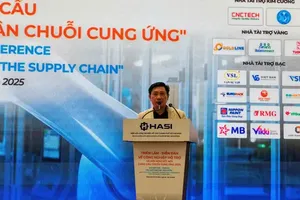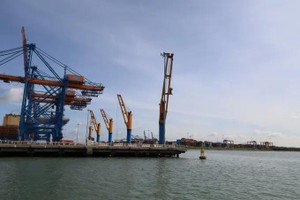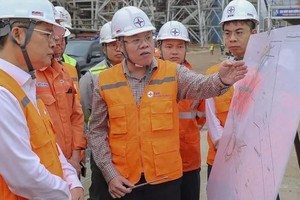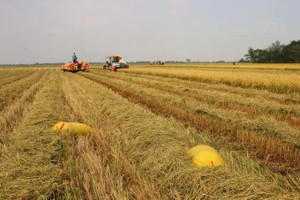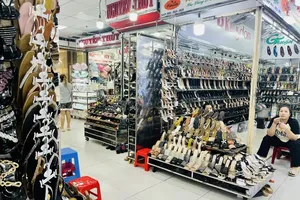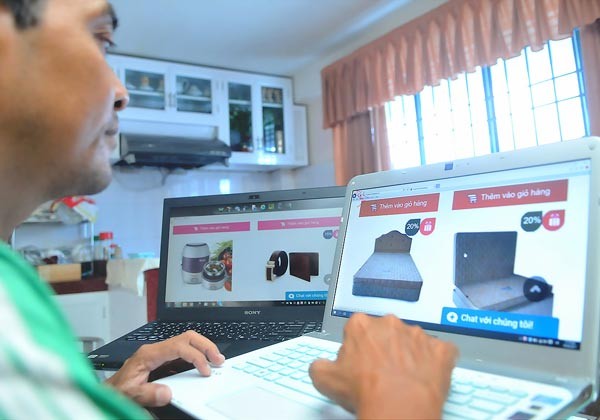
Customers in HCMC have got acquainted with e-commerce and other new tech application trading types such as transport services with Uber and Grab and Vietlott. They have the advantage over traditional trading with foreign factors in investment and management.
At present, e-commerce posts 22 percent growth rate a year, much higher than 10 percent of the retail industry. The e-commerce market value of Vietnam touched $4 billion last year, forecast to hit $10 billion in the next five years by E-Commerce and Information Technology Bureau under the Ministry of Industry and Trade.
Vietnam now has 91 million people, of whom 45 percent have accessed the internet with HCMC and Hanoi accounting for 28 percent. An internet user in Vietnam spends $160 a year on online shopping on average.
Reports by Vietnam E-Commerce Association show that 32 percent businesses established trading relations with foreign partners on the internet and 11 percent attended e-commerce by the end of 2016.
There are opinions that the country’s e-commerce growth rate might be much higher than the reported numbers. Last year, Lazada group alone saw the volume of orders sextuple 2014. It is said receive an average of 15,000-20,000 orders a day.
Tiki Company revealed that the number of successfully implemented orders has been triple and quadruple for the last one year.
E-commerce has made up few percent in the total retail revenue of the country. With the current momentum, the field is forecast to continue growing stronger to enter a drastic competition with traditional tradings.
Many large distribution system such as Saigon, Co.op, Big C, Lotte Mart, Aeon and Vinmart have positively implemented online sales in preparations for the fiercer competition.
Changes to suit new situation
Coming to Vietnam since 2014, Uber quickly became a new phenomenon in transport trading field after a couples of months. The number of Uber drivers and passengers have quickly increased, concerning taxi companies who have said Uber’s competition unfair.
So far the operation type of Uber has been a matter of controversy. If being a tech product, Uber will pay taxes for 20 percent of its percentage revenues. If being a transport service, the company must declare its entire revenues.
Taxi firms has improved their services to compete with the convenient and low cost transport service. For instance they have provided customers with information about waiting time and drivers’ phone numbers.
However, the biggest weak point of taxi firms now is high fare. In addition, some drivers have intentionally carried customers around to increase the payment or has showed uncomfortable attitude or complaint when passengers travel over a short distances.
Taxi firms’ operation and regulations have been rigid and uncompetitive for a long time, needing changes to catch up with the common development trend and meet increasing travel demand of citizens.
'Uber is just an outstanding case of tech application in management. There will be other types of services developed online and across the border creating severer competition. If companies in traditional trading fields do not change to suit new situation, they will find difficulties in competing and integrating, according to Mr. Hoa.'
Mr. Nguyen Ngoc Hoa, deputy director of the Department of Industry and Trade, said that market competition required businesses to taking initiative in improving their competitiveness by lowering prices and improving service quality.
They should address their weak points and repair them. For instance, taxi firms are now applying a fixed fare list while Uber prices are flexible depending on timing.
He advised businesses to improve their staff’s serving attitude and the transparency of their services to lure customers and pay attention to small demands of customers to better serving them.
It is time for authorized agencies to debate suitable policies covering tax and insurance to create a fair playground for businesses, encourage traditional trading changes and not limit new trading types, added him.










